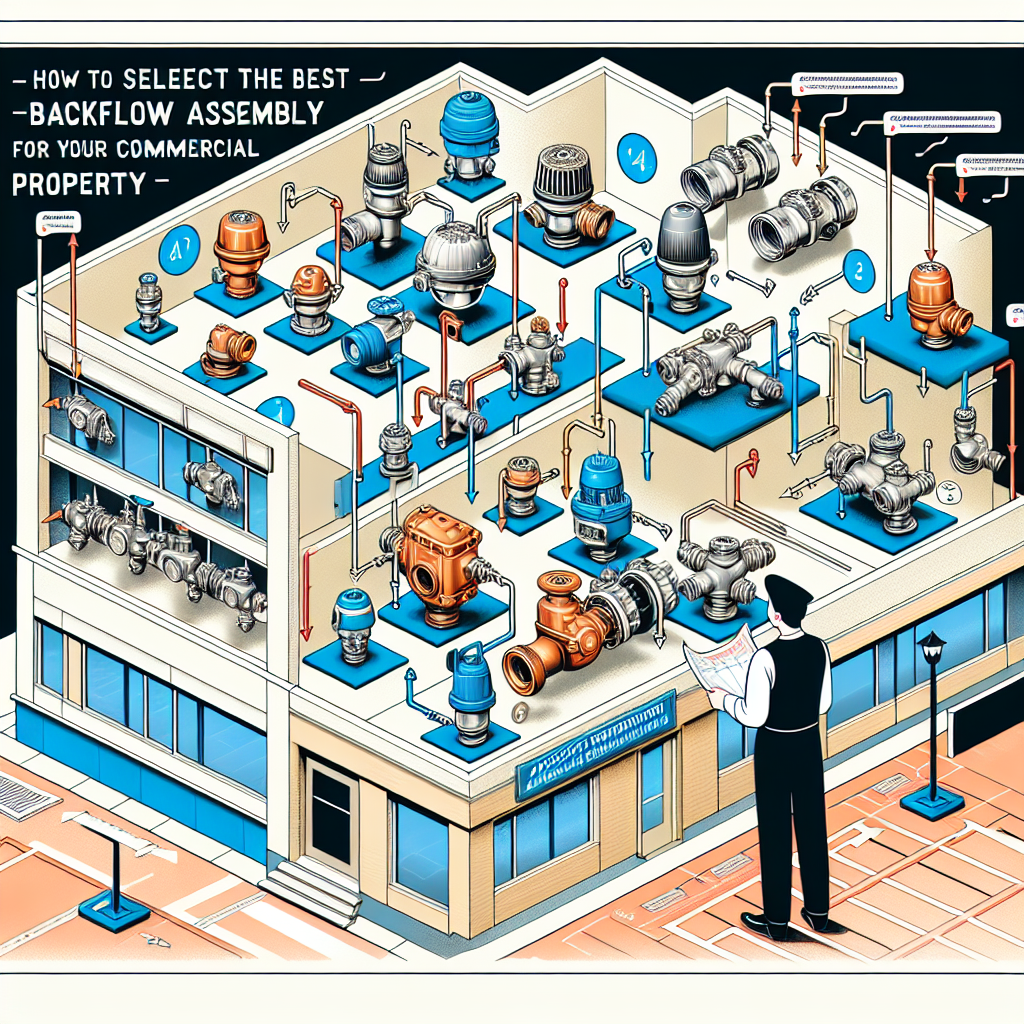When it comes to maintaining a safe and healthy environment in your commercial property, having a reliable backflow prevention assembly is essential. These systems not only protect your drinking water supply from contamination but also ensure that you remain compliant with local regulations. However, selecting the best backflow prevention assembly can be daunting. With various options available, it’s crucial to understand the factors that will impact your decision. In this article, we will guide you through the process of choosing the right backflow prevention assembly for your commercial property.
Understanding the Basics of Backflow Prevention
What is Backflow?
Backflow is the reverse flow of water, potentially causing contaminants to enter your clean water supply. This can happen for a variety of reasons such as changes in water pressure, when a hose is submerged in water, or when firefighting activities occur nearby. Backflow prevention assemblies are designed to prevent this undesirable flow and keep your water supply safe.
Why is Backflow Prevention Important?
The importance of backflow prevention cannot be overstated. Contaminated water can pose serious health risks to your employees and customers, leading to potential legal liabilities and damage to your reputation. Local municipalities often require businesses to install backflow prevention devices as part of their plumbing codes.
Types of Backflow Prevention Assemblies
Before you start searching for the best assembly for your property, it’s essential to familiarize yourself with the different types of backflow prevention assemblies available:
1. Double Check Valve Assembly (DCVA)
DCVAs are suitable for low-risk applications. They consist of two check valves and are designed to prevent backflow caused by backpressure. These devices are commonly used in commercial properties that do not pose a high risk of contamination.
2. Reduced Pressure Zone Device (RPZ)
RPZ assemblies offer a higher level of protection and are required for high-risk applications. They feature two check valves and an alleviation valve, which prevents backflow even in cases of backpressure or back-siphonage. This type is often used in facilities that involve hazardous materials.
3. Pressure Vacuum Breaker (PVB)
The PVB is effective for protecting against back-siphonage and is ideal for irrigation systems and other non-potable applications. However, it is not suitable for all situations, especially where backpressure is a concern.
Factors to Consider When Choosing a Backflow Prevention Assembly
1. Type of Facility and Risk Level
When selecting a backflow prevention assembly, the first step is assessing the risk level associated with your facility. If your business deals with non-hazardous substances, a DCVA may suffice. However, for businesses handling chemicals or hazardous material, opting for an RPZ is advisable for maximum protection.
2. Local Regulations and Compliance
Ensure you are familiar with your local plumbing codes and regulations regarding backflow prevention. The appropriate type of assembly may be dictated by local laws, and failure to comply can result in penalties and increased risks.
3. Size Requirements
Consider the size of your property and its water usage needs. Backflow assemblies come in various sizes, and selecting the correct one for your facility is vital. A professional plumber can help you determine the appropriate size based on your water system.
4. Maintenance and Inspections
Backflow prevention assemblies require regular maintenance and inspections to function properly. Choose an assembly that is easy to access and service, and check if your local regulatory body requires annual testing of the device.
5. Budget and Cost
While investing in quality equipment is crucial, it’s important to keep your budget in mind. Compare the initial costs of different assemblies, as well as their long-term maintenance and testing costs, to make an informed choice.
Working with Professionals
While it may be tempting to handle backflow prevention on your own, involving professionals is often the safest route. Licensed plumbers with experience in backflow prevention assemblies can help you navigate the complexities of selection, installation, and maintenance.
Conclusion
Choosing the best backflow prevention assembly for your commercial property is a critical decision that impacts the health and safety of everyone who enters your facility. By carefully considering the various types of assemblies available, the unique needs of your property, and consulting with professionals, you can ensure that you make an informed choice. Always keep your local regulations in mind, and remember that investing in the right backflow prevention system will protect your water supply and your business in the long run.


